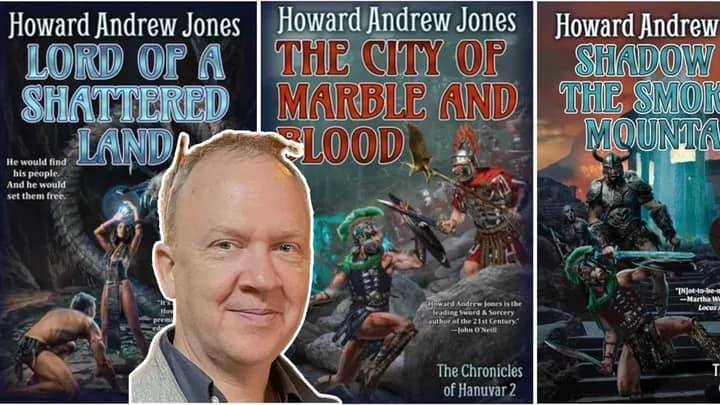 I received the news Thursday afternoon that Howard A. Jones had passed the night before. I was expecting this the past couple months after hearing Howard had a terminal case of glioblastoma cancer in the brain.
I received the news Thursday afternoon that Howard A. Jones had passed the night before. I was expecting this the past couple months after hearing Howard had a terminal case of glioblastoma cancer in the brain.
It was late 1997 or early 1998 that Howard Jones had contacted me. I was the Official Editor of the Robert E. Howard United Press Association at the time. Periodically someone would contact me on how to get their pastiche Conan novel sold or how to get on the syndicated Conan T. V. show which was showing at the time. I never saw that show.
I received an e-mail from Howard who introduced himself and told me that he wanted to be to Harold Lamb what Glenn Lord was to Robert E. Howard. Glenn Lord was the agent for the Robert E. Howard copyright holders for around 28 years. Those Zebra and Ace non-Conan Robert E. Howard paperback collections. Glenn Lord was the agent who made the deals. He was a breath of fresh air. Read More
Science Fiction and Fantasy New Releases: 18 January 2025
Saturday , 18, January 2025 Uncategorized Leave a commentEvery week, the Castalia House Blog spotlights some of the many new releases in independent, pulp, and web novel-influenced science fiction and fantasy.
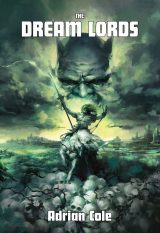 The Dream Lords – Adrian Cole
The Dream Lords – Adrian Cole
Mankind and its empire spanning the Nine Worlds are ruled by a powerful triumvirate of long-lived dreamers: the Dream Lords!
The Dream Lords project a vision of utopia to obfuscate the alien hostility of Zurjah, the world long claimed to be the true seat of humanity. A vision that grows hazy as the power of the Dream Lords wanes.
Destroyed by ancient wars, Earth has become a backwater prison colony, and its native inhabitants are called “Barbarian” and enslaved to perpetuate a myth that Mankind came from the stars.
Galad Sarian, son and heir of one of the Dream Lords, discovers not only the truth behind the crumbling Zurjahn empire and faltering of the powers that maintain humanity’s grasp on alien worlds but also a plot by Daras Vorta, the Warden of Earth, to overthrow the Dream Lords with the aid of demonic forces.
This edition collects A Plague of Nightmares (1975), Lord of Nightmares (1975), and Bane of Nightmares (1976) in a single volume, celebrating the 50th Anniversary of Adrian Cole’s Dream Lords.
It’s hard to see the stars when the sky is broken.
Caesar and Amelia must part ways on crucial tasks to relocate their people from the incoming war. Milton is days away from reaching Lost Town, but is it enough time to prepare when he’s been training for this his whole life?
Harrison gets a second chance at redemption as he ventures to Earth to save the inhabitants of Arcadia. His optimism fractures when a rogue team of assassins is recruited to thwart his mission.
And what other secrets lay beyond Arcadia?
Ironheart Crucible takes Leon Jäger and his companions into the vast and merciless desert, where survival depends on more than strength—it demands resilience, strategy, and an iron will. At the heart of the endless sands lies Oasis, a bustling town built around a vital spring, where treachery and ambition thrive beneath the surface of its shifting sands.
Drawn by promises of opportunity and peril, Leon must navigate a dangerous path through both a treacherous dungeon and a martial tournament, where the stakes are nothing short of life and death. Faced with opponents who test his skill and enemies who surpass him in power- both in Cultivation and politics, Leon must find a way to endure and prevail.
But survival alone will not be enough. To face the trials ahead, Leon must break through to the elusive Qi Compression realm, a process that will push him to his limits and force him to confront the very nature of his cultivation—and his own concept of the truths behind Qi itself. Each step forward brings new revelations and challenges that will shape not only his future, but the fates of all who stand beside him.
The Tomb has acknowledged Chase’s lineage, and declared him Emperor to the universe. But what good is being an Emperor if you don’t have an Empire? While the Wolfhounds have conquered, or perhaps liberated, a fair number of planets, the core worlds have not yet been touched. Furthermore, the crown jewel of them all, Cor Imperii, still stands under the control of Speaker Phillip K. Neill, and the rest of the members of the coup that seized control of the empire over a decade ago.
But Neill’s days are numbered, whether he fully realizes it or not, as his dictatorship is slowly dismantled, one piece at a time and he clings to whatever hopes he has left. While the road before Chase is still long, and still fraught with peril and a good many dangers. However, for Chase and the Wolfhounds, the end is finally within view – now it’s only a matter of time.
The challenges may be different, but they are by no means less than the ones he’s faced previously. In fact some of them he may find to be harder, now that he is no longer ‘pretending’ to be the prince, having proven to all his right to reign and having finally accepted the responsibilities that have now become his. Read More
Sensor Sweep: Weird Tales, Ramsey Campbell, Swords of Steel
Monday , 13, January 2025 Sensor Sweep Leave a commentPulp (Rough Edges): Many, many years ago I read one or two novels by Otis Adelbert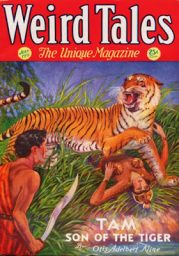 Kline and remember enjoying them, but I couldn’t tell you exactly which books I read. I do know, however, that TAM, SON OF THE TIGER wasn’t one of them, because I just read it and I’m certain I’d never read it before.
Kline and remember enjoying them, but I couldn’t tell you exactly which books I read. I do know, however, that TAM, SON OF THE TIGER wasn’t one of them, because I just read it and I’m certain I’d never read it before.
Cinema (Nerdrotic): Top 5 Woke Hollywood DISASTERS of 2024.
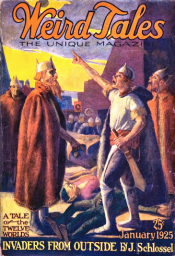 Weird Tales (Tellers of Weird Tales): I finished up last year by writing about the one-hundredth anniversary issue of Weird Tales, published in 2023. I will have more on that issue and some ideas connected to it, but I would like to write about other things for a while and get away from that dreary parade. The first issue of Weird Tales was published in March 1923, thus the first calendar year of “The Unique Magazine” was not a full one. Read More
Weird Tales (Tellers of Weird Tales): I finished up last year by writing about the one-hundredth anniversary issue of Weird Tales, published in 2023. I will have more on that issue and some ideas connected to it, but I would like to write about other things for a while and get away from that dreary parade. The first issue of Weird Tales was published in March 1923, thus the first calendar year of “The Unique Magazine” was not a full one. Read More
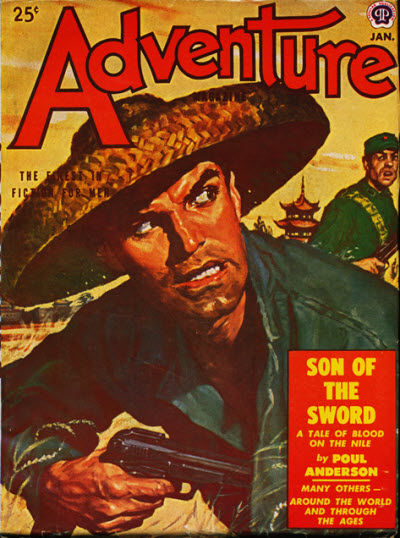 I have written on Poul Anderson’s sword & pseudo-science stories in the pulp magazine Planet Stories. At the same time, Anderson had an historical in the pages of the pulp Adventure.
I have written on Poul Anderson’s sword & pseudo-science stories in the pulp magazine Planet Stories. At the same time, Anderson had an historical in the pages of the pulp Adventure.
“Son of the Sword” appeared in the January 1952 issue of Adventure. Anderson was placing stories with Popular Publications’ Super Science Stories. Ejler G. Jakobsson was editor of both magazines at this time. Read More
Sensor Sweep: Greyhawk, D&D, Cirsova, Iron Wolf
Monday , 6, January 2025 Sensor Sweep Leave a commentRobert E. Howard (M Porcius): Let’s read three stories from my copy of The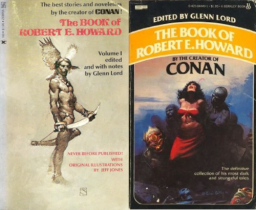 Book of Robert E. Howard that I think are set in the 19th or 20th centuries and that may or may not have some kind of supernatural element.
Book of Robert E. Howard that I think are set in the 19th or 20th centuries and that may or may not have some kind of supernatural element.
D&D (Fandom Pulse): Dungeons & Dragons has moved into woke territory to the determinant of players in 2024’s new edition, and now a new supplement Forge of Foes by Sky Flourish turns an adventure into an “anti-colonialism” rant to further push woke politics on players.
Comic Books (Paperback Warrior): The Savage Sword of Conan #3 was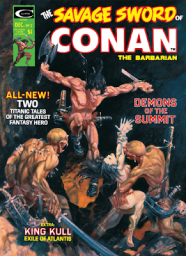 first published in December of 1974. The cover, inspired by Bjorn Nyberg’s short story “The People of the Summit” (more on that in a bit), was painted by Mike Kaluta. The first pinup, which again is probably inspired by Nyberg’s story, is penciled by Alfredo Alcala. Read More
first published in December of 1974. The cover, inspired by Bjorn Nyberg’s short story “The People of the Summit” (more on that in a bit), was painted by Mike Kaluta. The first pinup, which again is probably inspired by Nyberg’s story, is penciled by Alfredo Alcala. Read More
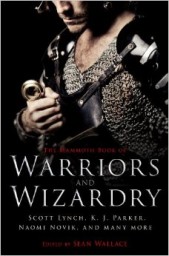
Fabio was here
I have reached a milestone with the Castalia House blog: ten years of blogging. My first post was “The Mid-1980s Paperback Sword and Sorcery Extinction Event” on December 28, 2014. The blog posts have continued without interruption with the exception of once when the site was down. I have also written some extra blog posts along the way so I am over 520 posts.
I took over Sensor Sweep in November 2017 when Jeffro departed. Sensor Sweep’s emphasis changed some as I don’t have a gaming background. More fiction and some cinema in the mix. Read More
Science Fiction and Fantasy New Releases: 4 January 2025
Saturday , 4, January 2025 Uncategorized Leave a commentEvery week, the Castalia House Blog spotlights some of the many new releases in independent, pulp, and web novel-influenced science fiction and fantasy.
They started the fight. John is going to end it.
Despite John’s best efforts to avoid getting pulled into a war, the Resplendent Empire is determined to crush John and Candle Scholar Tower. No sooner had he returned from the once a millennium magical competition than he discovers that the Empire has declared war, confident that they will be able to roll over John and his allies with little trouble.
Yet little do they know what sort of force they have provoked. No longer a man of two minds, John sets out to end things once and for all. As the Dragon Empress Kalmeric marshall’s her forces, John puts the lessons he learned on the battlefield all those years ago to work.
Venturing out from his beloved farm, John is intent on making this adventure his last so he can spend the rest of his days sitting on his porch watching his wheat grow next to those he loves.
Harvey Bennett didn’t sign up for this Christmas adventure.
When a small-town holiday festival turns into a deadly game of cat and mouse, Ben and Julie are thrust into a chilling mystery buried beneath the snow-covered streets of Hope, Alaska. At the center of it all is a legendary golden ornament—a piece of local history said to hold the key to a fortune in lost gold. But someone else wants that fortune, and they’ll stop at nothing to claim it.
As a ruthless financier and his dangerous crew close in, Ben and Julie follow a trail of cryptic clues carved into tombstones and hidden in long-forgotten rail tunnels. Each step draws them deeper into Alaska’s wilderness—and closer to a treasure that’s as cursed as it is valuable.
With a massive storm bearing down and their enemies closing in, Ben and Julie must outwit their pursuers and uncover the truth behind The Heart of the Mountain. But the deeper they dig, the more they realize the gold isn’t the only thing at stake—their lives, the town’s legacy, and their chance at a peaceful Christmas with their daughter all hang in the balance.
War has come to the Casa system, and the crew of the S.D.F. Jericho are stuck in the middle of it.
Surrounded by enemy warships, Captain Zeke Darius must lead his crew in what will certainly become the fight of their lives. Outnumbered in an alien star system, the future looks bleak. But in the massive, alien ship Renegade the crew has a fighting chance. And the Ashi Empire has never faced the indomitable human spirit!
On the planet Casasil a few brave Space Marines are preparing to make a last stand. With few resources and even less hope, the special operations team is right in its element. Doing the impossible is what they do best, and Master Sergeant Remmy Steel is prepared to give their alien enemies all the fight they can handle. Read More
Fiction (Semicolon): The Secret of Terror Castle is the first installment in The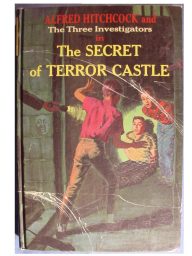 Three Investigators series of mystery detective stories, also known as Alfred Hitchcock and The Three Investigators. The original series was published from 1964 to 1987 and comprised 43 finished books, written by at least five different authors and illustrated by a multiplicity of illustrators over time.
Three Investigators series of mystery detective stories, also known as Alfred Hitchcock and The Three Investigators. The original series was published from 1964 to 1987 and comprised 43 finished books, written by at least five different authors and illustrated by a multiplicity of illustrators over time.
Anime (Kairos): Anime’s unique visual storytelling enthralled audiences with its trademark artistry. But the industrywide abandonment of hand-drawn cel animation to digipaint has degraded the medium’s look and feel.
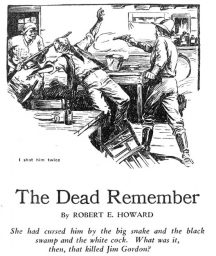 Weird Tales (Dark Worlds Quarterly): Being a Pulp writer was not a high-status affair. A sale was a sale. Some Pulpsters were completely mercenary, selling to anyone, any genre that would pay a penny-a-word, or some times less. It was only with the coming of Science Fiction that writers thought to make a living writing only one kind of story. Edmond Hamilton and Jack Williamson tried their hardest to be simply SF writers but succeeded in a limited way. Read More
Weird Tales (Dark Worlds Quarterly): Being a Pulp writer was not a high-status affair. A sale was a sale. Some Pulpsters were completely mercenary, selling to anyone, any genre that would pay a penny-a-word, or some times less. It was only with the coming of Science Fiction that writers thought to make a living writing only one kind of story. Edmond Hamilton and Jack Williamson tried their hardest to be simply SF writers but succeeded in a limited way. Read More
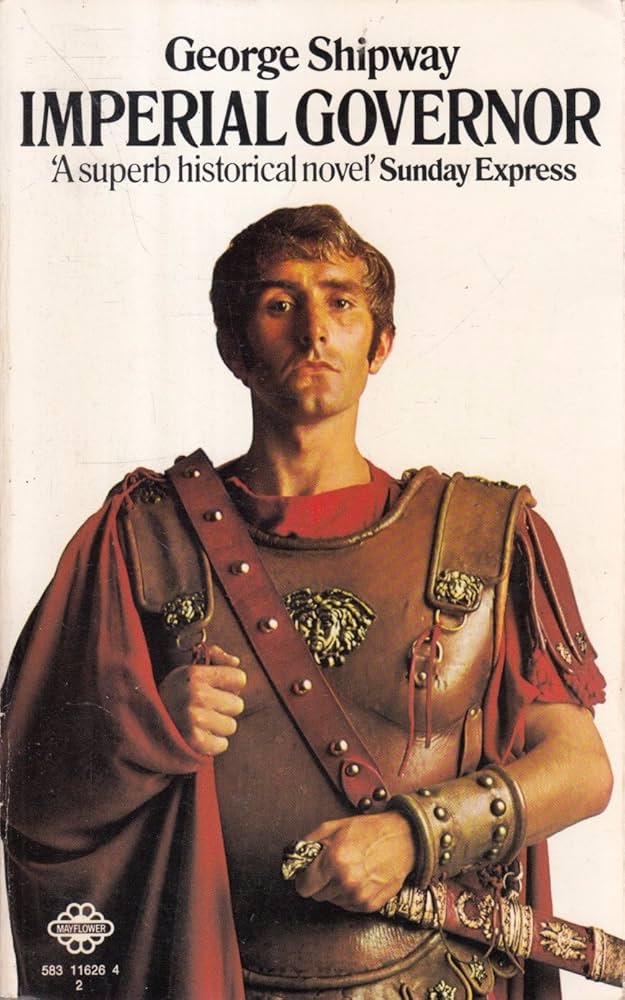 I mentioned George Shipway (1908-1982) a few weeks back as an accurate historical novelist. He had ten novels from 1968 to 1979. Three novels about Norman England, two novels about King Agamemnon, two Indian Raj novels, two political satire books, and Imperial Governor.
I mentioned George Shipway (1908-1982) a few weeks back as an accurate historical novelist. He had ten novels from 1968 to 1979. Three novels about Norman England, two novels about King Agamemnon, two Indian Raj novels, two political satire books, and Imperial Governor.
Shipway served in the Anglo-Indian Army in the cavalry until 1946. Wallace Breem was another soldier turned writer who was in India. Get yourself a copy of his Eagle in the Snow.
Imperial Governor (1968) was his first novel. It is written in the first person in the form of a memoir by Gaius Suetonius Paulinus, former governor of Britain. The novel starts with Suetonius in Lower Germany called to Rome in autumn 59 A.D. There, he is informed he is to be the new governor of Britain. Things are not well in that relatively new province. It is costing more than it is bringing in. Governors don’t last long as they keep dying. Suetonius is to get mines producing (along with slaves to do the work) to balance the sheets. Rome always went where metals could be found. Read More
Sensor Sweep: Donald Wandrei, Overrated Science Fiction Writers, D&D
Monday , 23, December 2024 Sensor Sweep Leave a commentWriting (Kairos): Brandon Sanderson is widely respected as a meticulous world builder, an innovative storyteller, and a prolific writer. Over the past two decades he’s made his name as a crafter of ultra-refined magic systems and dynamic characters.
Games (Kairos): The AAA video game industry stands at a turning point. Facing runaway development costs, dwindling consumer trust, and rising market instability, big studios must adapt to a rapidly changing market.
D&D (Grognardia): As I alluded to yesterday, I increasingly feel as if I don’t have anything interesting left to say about Dungeons & Dragons. On some level, that’s understandable. There are nearly 4500 posts on this blog and, though I haven’t done an inventory of just how many of them are specifically about D&D, I think it’s safe to wager that more than half of them – that’s over 2000 posts. Read More
 The new issue of Men’s Adventure Quarterly (#11) is well timed as it deals with UFOs in the men’s adventure magazines. All the talk about drones over New Jersey the past month has included UFOs.
The new issue of Men’s Adventure Quarterly (#11) is well timed as it deals with UFOs in the men’s adventure magazines. All the talk about drones over New Jersey the past month has included UFOs.
This issue is 143 pages, 8.5 x 11 inches, sub-divided into articles about UFOs in men’s magazines in the 1950s, 60s, and 70s. Cover art by Earl Norem!
Contents:
| Author | |
| Bob Deis | The MAM/UFO Connection |
| Donald E. Keyhoe | The Flying Saucers are Real |
| Jack Jonathan | The Saucers are Spies from Mars |
| Frank Edwards | Are They Hiding the Truth About Flying Saucers |
| Gary Lovisi | Space-Sploitation |
| W. Douglas Lansford | George Adamski: The First Ambassador to Outer Space? |
| John A. Keel | UFO “Agents of Terror” |
| Jules Burt | Gerry Anderson’s UFO: The Series |
| Larry Lewis | The New Menace of U.S.O.’s – Unidentified Sea Objects |
| Pictorial | Sexy Sirens and the Flying Saucers |
| Pictorial | Mara Corday |
| Robert F. Dorr | Are UFOs Attacking Our Oil Fields? |
Science Fiction and Fantasy New Releases: 21 December 2024
Saturday , 21, December 2024 Uncategorized Leave a commentEvery week, the Castalia House Blog spotlights some of the many new releases in independent, pulp, and web novel-influenced science fiction and fantasy.
A merciless evil is stalking the cities of the Moon. Only Siegn can unravel the mystery.
Assigned to break a VR smuggling ring, Siegn makes his first visit to the Moon—but his chief suspect is found dead. Now he must solve the murder before the killer strikes again. That’s not going to be easy. On the Moon, VR is a way of life, and no one wants a Martian prying into the reality beneath the glamorous fantasies.
But reality gatecrashes the party when hackers attack the Moon’s prized space elevator. Now the race is on to find the criminals before catastrophe strikes.
It’s Siegn’s darkest and strangest case yet. Throw in a bunch of long-lost cousins and a beautiful–but dangerous–VR celebrity, and Siegn will need all his luck and skill to stop the forces of evil… and that’s before we even talk about the cat.
Fourteen tales of thrilling adventure and daring suspense, including:
Enraged by the death of his brethren, Sword-Superior tears his way through the Isshla and their caverns, seeking out the control device that will destroy Earth! The fate of the world hangs in the balance as Gigwanator-Superior pursues him!
Ottocar wishes he were anything but a turtle trainer…until a strange and lovely masked girl at a festival convinces him with a kiss: fix the turtle races for her!
A tenuous truce between a small village and a savage creature of fey has been strained to breaking! If there can be no peace, the only choice is to win!
Now in the presence of others like her, Kayla Blackmoon, a powerful psychic, must prove, to her mentors and herself, that she belongs and has a greater purpose!
Years of struggle have left Zecia weakened in their war against the Kan’Tanu Cult.
Negotiating for peace is not an option when the System is in control. It can only be purchased through blood and steel. No one is spared from the winds of war.
Zac and his elite armies have been forced to the frontlines just as opportunity strikes. An ancient war fortress has risen from the dimensional depths.
Built by the Limitless Empire, it holds power and secrets far beyond what’s seen on the desolate frontiers. Seizing it could be the key to changing the winds of war. Zac finds himself in the heart of the struggle.
No matter what, he won’t let it fall into the Kan’Tanu’s hands.
Actions have consequences.
Jules has retired from the Institute, and spends her days rebuilding the Academy on Haven Two.
Dean visits each Alliance partner, seeking to salvage a crumbling accord, and encounters a mystery deeper than the universe.
Nothing has prepared Dean Parker and family for this adventure, as the end of one story is just the beginning of another. Read More
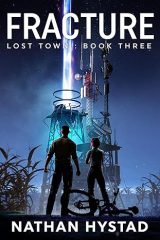 Fracture
Fracture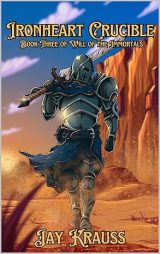 Ironheart Crucible
Ironheart Crucible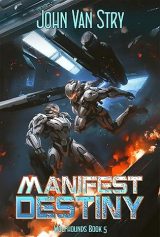 Manifest Destiny
Manifest Destiny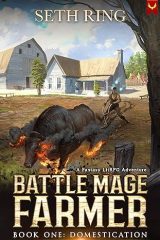 Culmination
Culmination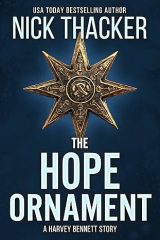 The Hope Ornament
The Hope Ornament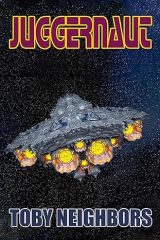 Juggernaut
Juggernaut The Assistant
The Assistant Cirsova Magazine #21 / Winter 2024
Cirsova Magazine #21 / Winter 2024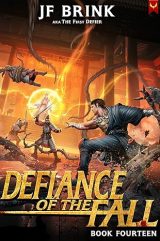 Defiance of the Fall #14
Defiance of the Fall #14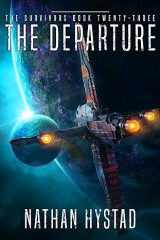 The Departure
The Departure